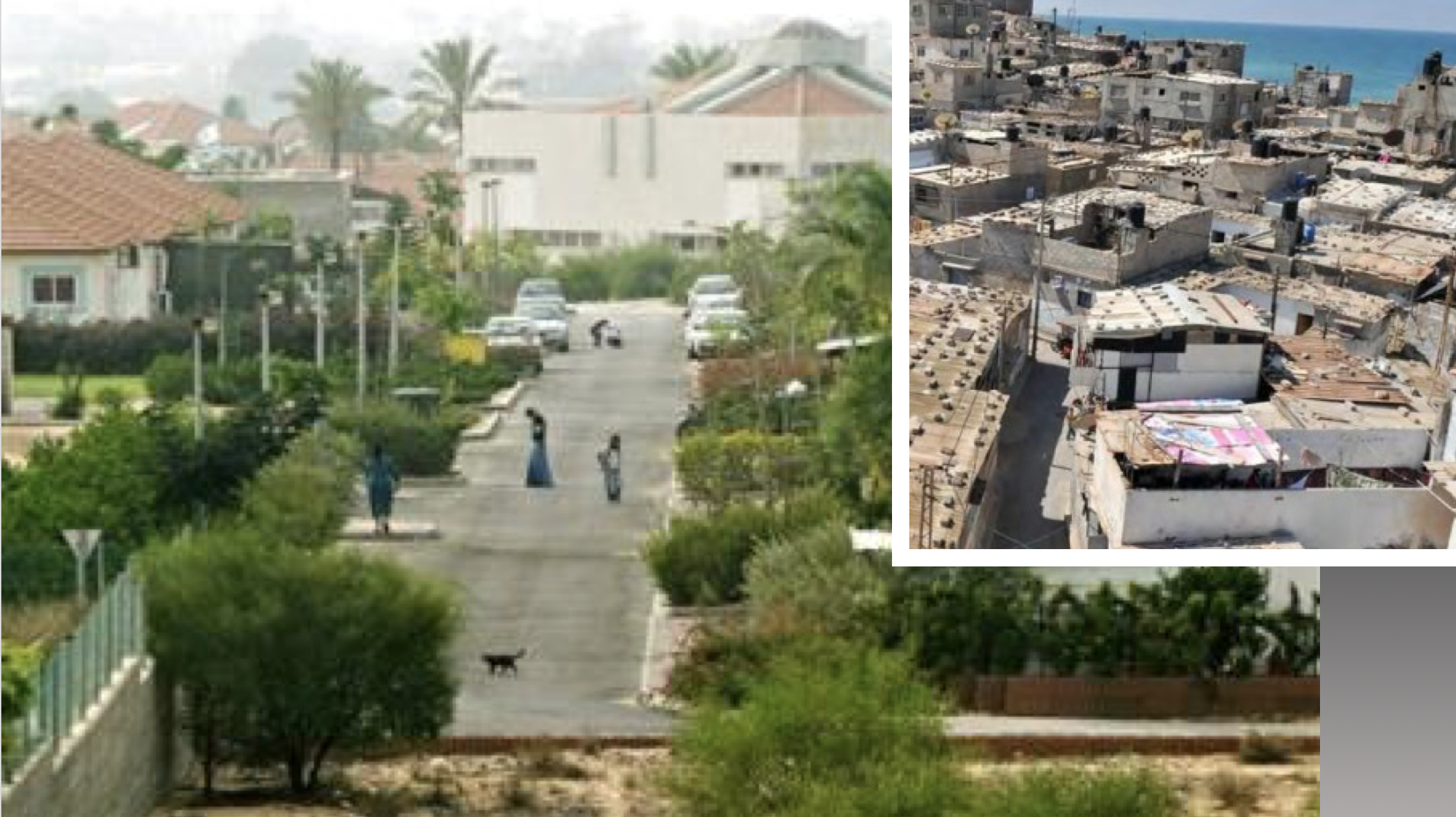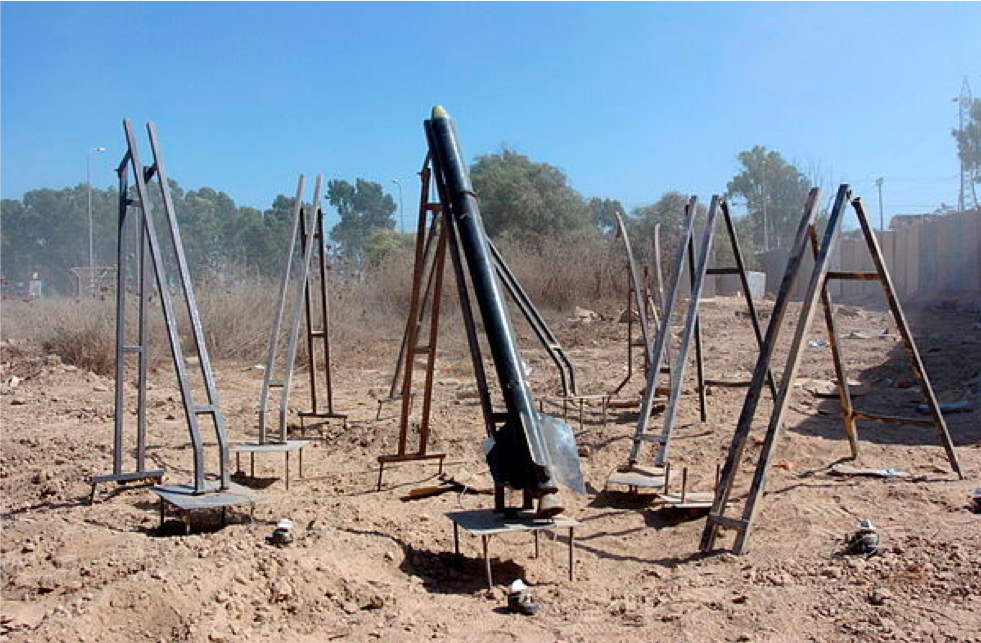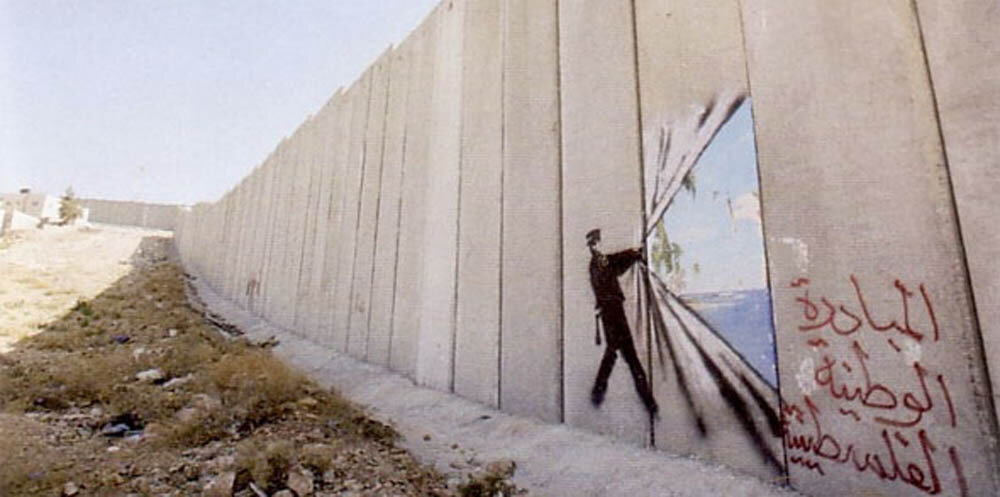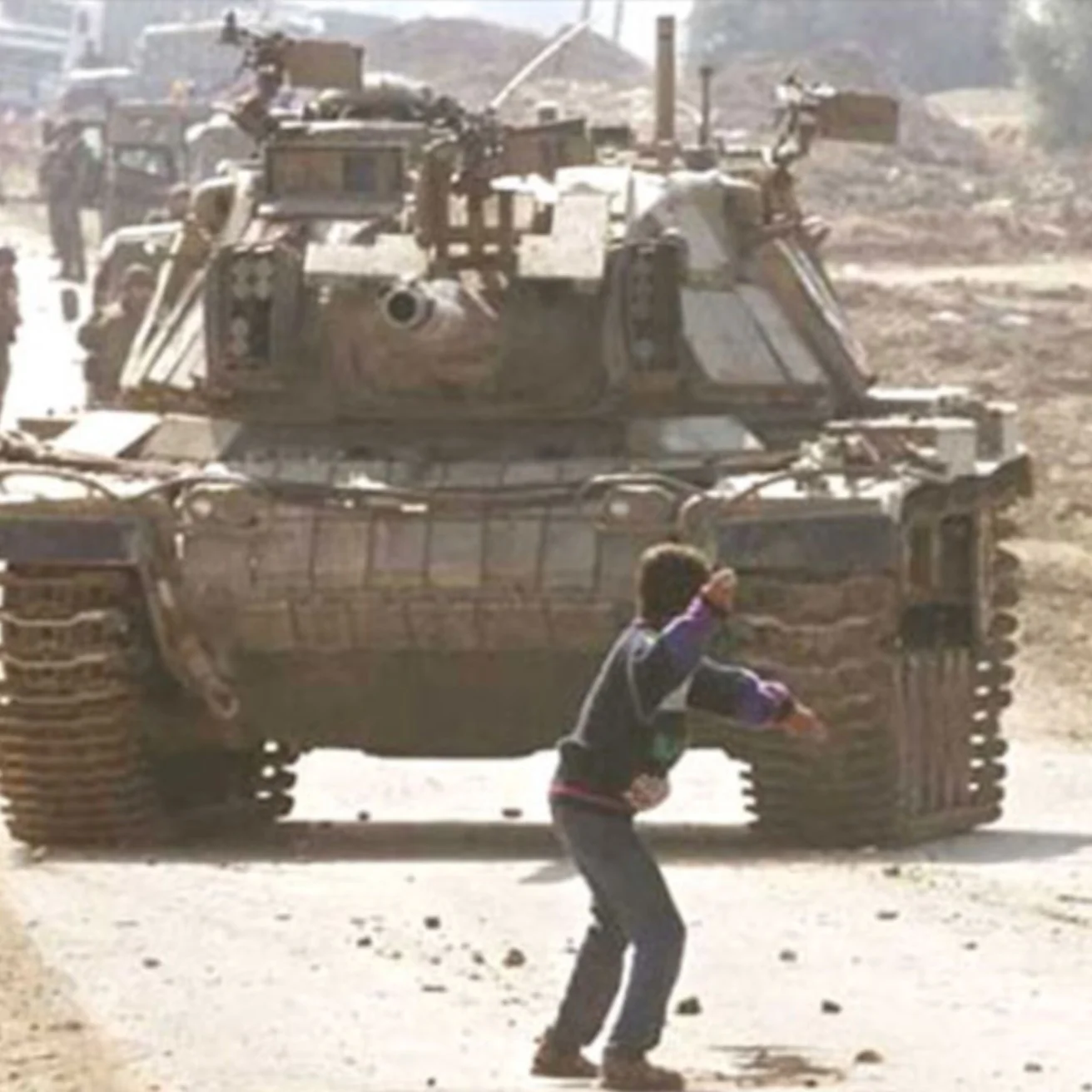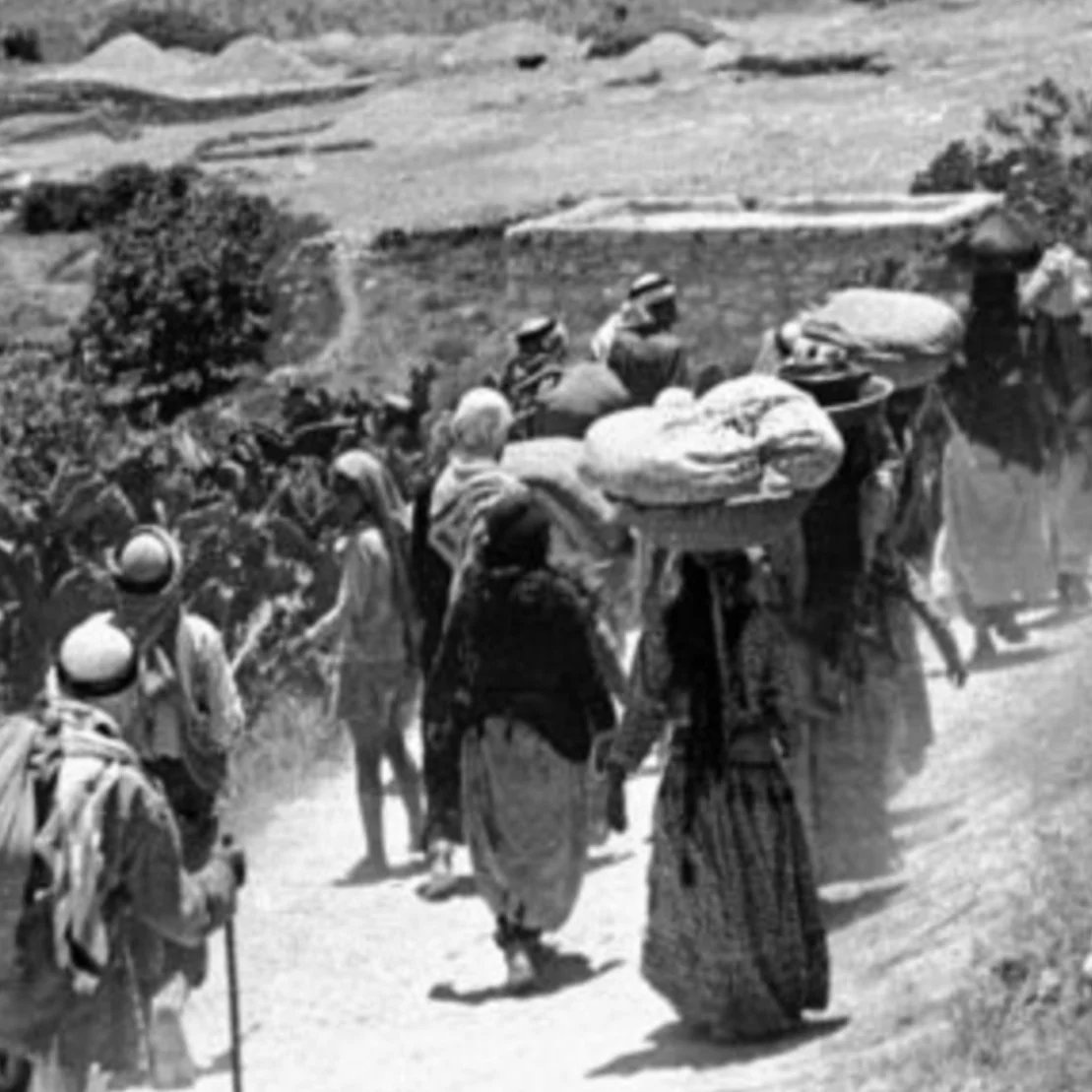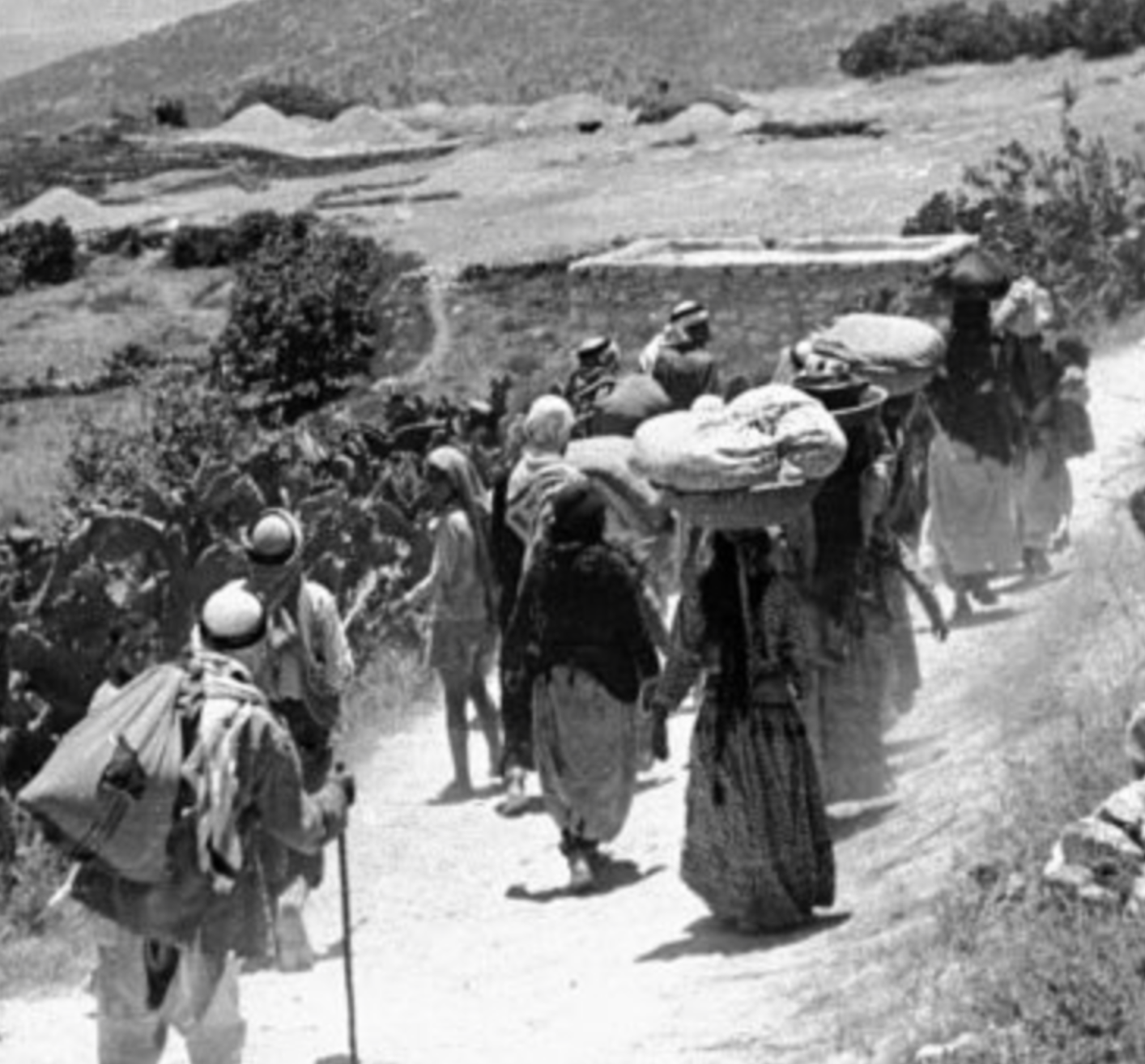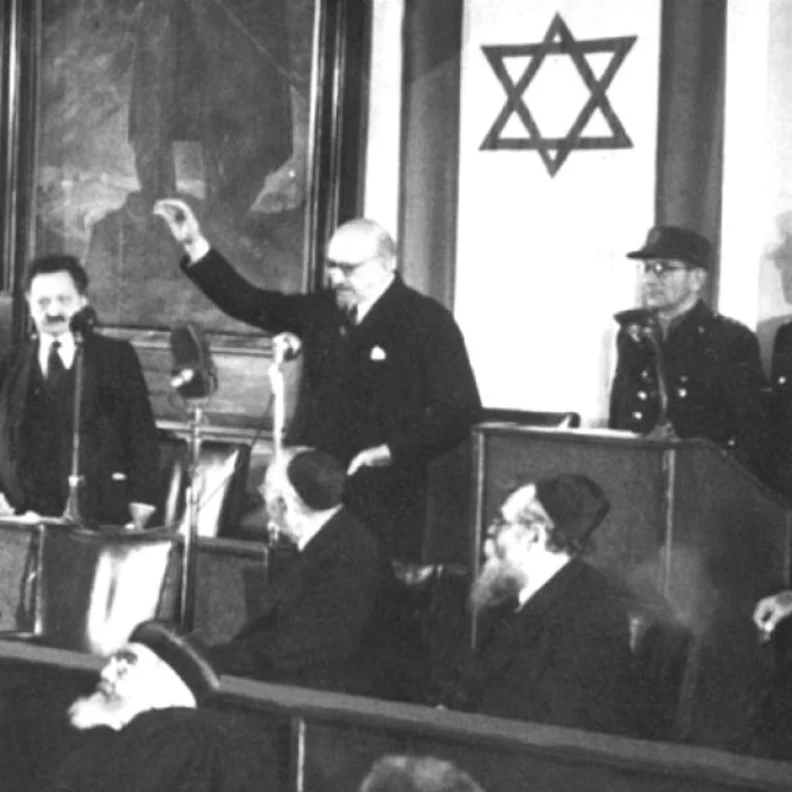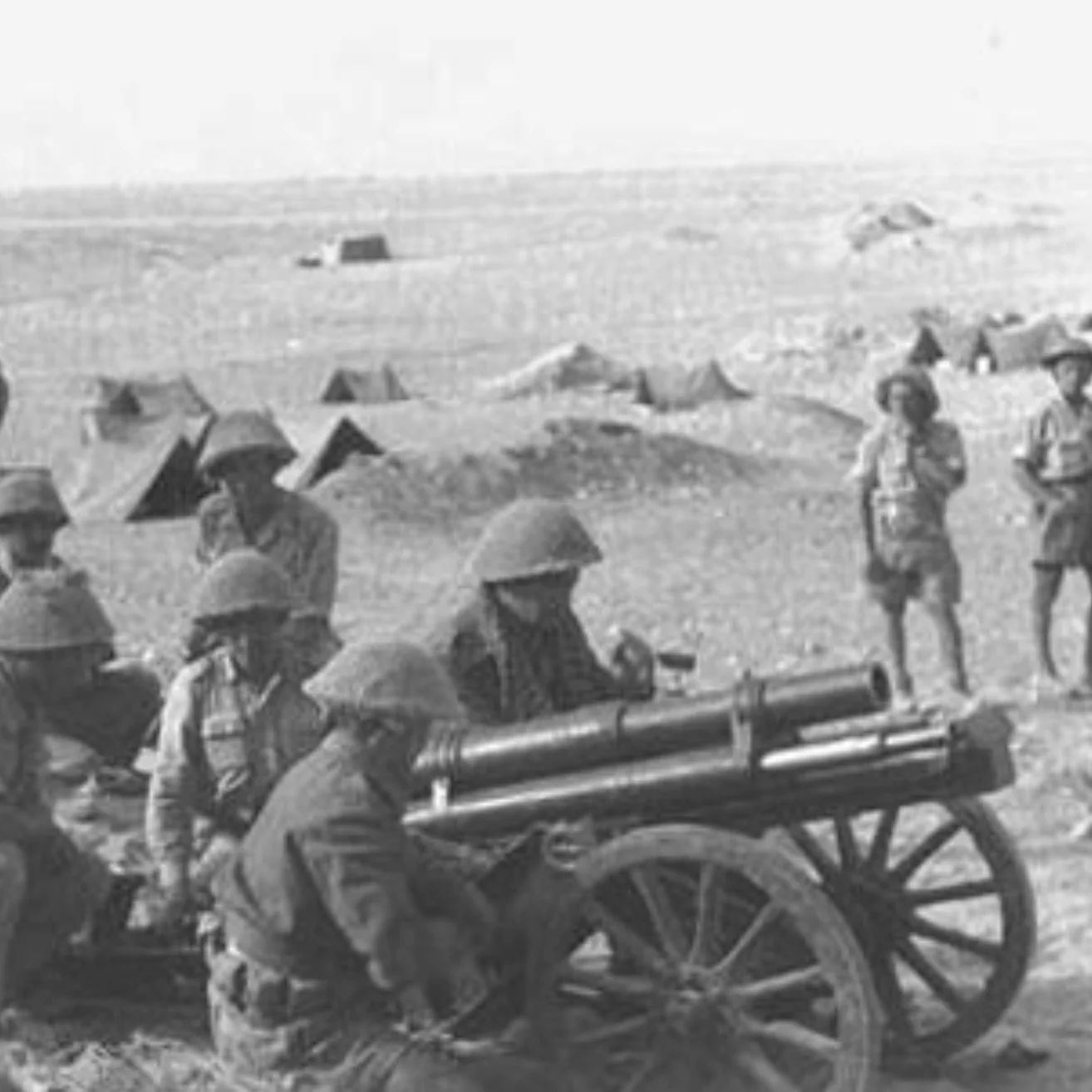
HISTORY: Works Cited (for select history articles)
"Accountability Denied: The Absence of Investigation and Punishment of Torture in Israel." (n.d.): n. pag. Stoptorture.org. The Public Committee Against Torture in Israel, 2009. Web. 3 May 2015.
Ackerman, Seth. "The Myth of the Generous Offer." FAIR. N.p., 01 July 2002. Web. 7 Apr. 2015.
Aruri, Naseer Hasan. Palestinian Refugees: The Right of Return. Sterling, VA: Pluto, 2001. Print.
Balfour, Arthur J. "Balfour Declaration." Letter to Baron Rothschild. 2 Nov. 1917. MS. United Kingdom, n.p.
Bard, Mitchell. "West Bank Security Fence: Background and Overview." Jewish Virtual Library. N.p., Apr. 2015. Web. 24 Apr. 2015.
"Bereaved Families Supporting Peace, Reconciliation and Tolerance." The Parents Circle Families Forum. N.p., n.d. Web. 20 Mar. 2015.
"Breaking the Silence › Israeli Soldiers Talk about the Occupied Territories." N.p., n.d. Web. 17 Apr. 2015.
"B'Tselem's Findings: Harm to Civilians Significantly Higher in Second Half of Operation Pillar of Defense." B'tselem. N.p., 8 May 2013. Web. 20 Apr. 2015.
Blumenthal, Max. Goliath: Life and Loathing in Greater Israel. New York: Nation, 2013. Print.
Chomsky, Noam. Peace in the Middle East?: Reflections on Justice and Nationhood. New York: Pantheon, 1974. Print.
Cook, Jonathan. "Lawsuit Challenges Israel's Discriminatory Citizenship Definition." The Electronic Intifada. N.p., 6 Apr. 2010. Web. 14 Apr. 2015.
Dajani, Souad R. Ruling Palestine: A History of the Legally Sanctioned Jewish-Israeli Seizure of Land and Housing in Palestine. Geneva, Switzerland: Centre on Housing Rights and Evictions, COHRE, 2005. Print.
Dergisi, Uluslararası Sosyal Ara Tırmalar. "John Stuart Mills' Harm Principle As the Foundation For Healthy Social Relations." The Journal of International Social Research Spring 4.17 (2011): n. pag. Web. 4 Apr. 2015.
"Diplomatic Relations." State of Palestine Mission to the United Nations. N.p., n.d. Web. 25 Apr. 2015.
Estrin, Daniel. "Israel Carries out Airstrike on Hamas Site in Gaza." Washington Times. The Washington Times, 19 Dec. 2014. Web. 20 Apr. 2015.
Dugan, Laura. "Moving Beyond Deterrence: The Effectiveness of Raising the Expected Utility of Abstaining from Terrorism in Israel." American Sociological Review 77.4 (2012): 597-624. JSTOR. Web. 14 Mar. 2015.
"Fatalities in the First Intifada." B'tselem. N.p., n.d. Web. 14 Apr. 2015.
Fields, Gary. "Landscaping Palestine: Reflections Of Enclosure In A Historical Mirror." International Journal of Middle East Studies 42.01 (2010): 63-82. Web. 3 Apr. 2015.
From the 1948 Nakba to the 1967 Naksa. Occasional Bulletin. N.p.: BADIL Resource Center for Palestinian Residency and Refugee Rights, 2004. Web. 5 Apr. 2015.
"GA Resolutions." UN News Center. UN, n.d. Web. 03 May 2015.
Gatopoulos, Alex. "How Successful Was Israel's Iron Dome?" Al Jazeera English. N.p., 8 Sept. 2014. Web. 24 Apr. 2015.
Goldmann, Nahum. The Jewish Paradox. New York: Grosset & Dunlap, 1978. Print.
Gorodetsky, Gabriel. The Soviet Union and the Creation of the State of Israel. Rep. Vol. December. Tel Aviv: Tel Aviv U, 2001. Web. 1 Apr. 2015. <http://www.cap.uni-muenchen.de/download/2002/2002_israel_soviet_union_gorodetsky.pdf>. "
Great Trek 1835-1846." South African History Online. N.p., n.d. Web. 25 Apr. 2015.
Hammond, Jeremy R. "Israeli Violations of U.N. Security Council Resolutions." Foreign Policy Journal. N.p., 27 Jan. 2010. Web. 10 Apr. 2015.
Hasson, Nir. "Israel Spends Annual $8k per Settler in East Jerusalem Security Costs - National." Haaretz.com. N.p., 23 Nov. 2014. Web. 24 Apr. 2015.
Hesketh, Katie. The Inequality Report The Palestinian Arab Minority in Israel. Rep. Haifa: Adalah The Legal Center for Arab Minority Rights in Israel, 2011. Print.
"International Court of Justice Finds Israeli Barrier in Palestinian Territory Is Illegal." UN News Center. UN, 09 July 2004. Web. 03 May 2015.
"Isandlwana Memorial." Gert Swart Contemplation: A Body of Work By Gert Swart. N.p., n.d. Web. 03 May 2015.
"Israel." Central Intelligence Agency. N.p., n.d. Web. 30 Mar. 2015.
"Israel and Occupied Palestinian Territories." Amnesty International. N.p., n.d. Web. 18 Mar. 2015.
Israeli-Palestinian Fatalities since 2000 - Key Trends. Rep. N.p.: UN-OCHA, 2007. Web.
Israel's Belligerent Occupation of the Palestinian Territory, including Jerusalem and International Humanitarian Law. New York: Permanent Observer Mission of Palestine to the United Nations, 1999. Print.
"Israel's Apartheid Policies against Palestinians." Seattle Mideast Awareness Campaign. N.p., n.d. Web. 20 Apr. 2015.
"Israel's Wars & Operations: First Intifada." Jewish Virtual Library. N.p., n.d. Web. 15 Apr. 2015.
Kelner, Yaron. "Mortality Rates Still Higher among Arab Infants in Israel." Ynet. N.p., 29 Nov. 2014. Web. 28 Apr. 2015.
Khalidi, Walid. "The Palestine Problem: An Overview." Journal of Palestine Studies 21.1 (1991): 5-16. Print.
Khazzoom, Aziza. "The Great Chain of Orientalism: Jewish Identity, Stigma Management, and Ethnic Exclusion in Israel." American Sociological Review 68.4 (2003): n. pag. JSTOR. Web. 30 Mar. 2015.
Lieberson, Stanley. “A Societal Theory of Race and Ethnic Relations.” American Sociological Review 26.6 (1961): 902-910. JSTOR. Web. 26 Apr. 2015.
McIntosh, Peggy, PhD. "White People Facing Race: Uncovering the Myths That Keep Racism In Place." (2009): n. pag. Minnesota Theater Alliance. The Saint Paul Foundation. Web. 1 Apr. 2015.
"Middle East Peace Process: Violent Clashes." The American Journal of International Law 95.1 (2001): 160-61. JSTOR. Web. 04 Apr. 2015.
Molavi, Shourideh C. Israel: A Democracy for Jews Only – Abuses Against Its Palestinian-Arab Citizens. Analysis Paper. Vol. May. Montreal: Canadians for Justice and Peace in the Middle East, 2008. Web. 1 Apr. 2015.
Moughrabi, Fouad, Elia Zureik, Manuel Hassassian, and Aziz Haidar. "Palestinians on the Peace Process." Journal of Palestine Studies Autumn Xxi.1 (1991): 36-52. Print.
Nguyen, Phan. "Dissecting IDF Propaganda: The Numbers behind the Rocket Attacks." Mondoweiss. N.p., 17 Nov. 2012. Web. 19 Apr. 2015.
Nguyen, Phan. "How Many People Have Died from Gaza Rockets into Israel?" Mondoweiss. N.p., 14 July 2014. Web. 19 Apr. 2015.
Noel, Donald L. "A Theory of the Origin of Ethnic Stratification." Social Problems 16.2 (1968): 157-72. JSTOR. Web. 29 Mar. 2015.
"Occupation and International Humanitarian Law: Questions and Answers." International Committee of the Red Cross8. N.p., 8 Apr. 2004. Web. 03 May 2015.
"Occupied Palestinian Territory: Gaza Emergency Situation Report." OCHA, 28 Aug. 2014. Web. 3 May 2015.
"The Ongoing Nakba: The Continuous Forcible Displacement of the Palestinian People." BADIL Resource Center for Palestinian Residency and Refugee Rights. N.p., n.d. Web. 03 Apr. 2015.
Oslo Accords. 13 Sept. 1993. Washington, DC.
"Palestine: An Introduction to History & Issues." Palestine Information Project. Palestine Solidarity Committee - Seattle, n.d. Web. 20 Apr. 2015.
Peled, Yoav. "Ethnic Democracy and the Legal Construction of Citizenship: Arab Citizens of the Jewish State." The American Political Science Review 86.2 (1992): 432-443. JSTOR. Web. 3 Apr. 2015.
"PLO: History and Overview." Jewish Virtual Library. N.p., n.d. Web. 19 Apr. 2015.
"Question of Palestine: Legal Aspects (Doc. 1) (31 March 1992)." UNISPAL. N.p., n.d. Web. 19 Apr. 2015.
Quigley, John B. Palestine and Israel: A Challenge to Justice. Durham: Duke UP, 1990. Print.
Rebhun, Uzi, and Chaim I. Waxman. Jews in Israel: Contemporary Social and Cultural Patterns. Hanover: Brandeis UP, 2004. Print.
"Rocket Attacks On Israel From Gaza. "IDF Blog: The Official Blog of the Israel Defense Forces. N.p., 06 Oct. 2010. Web. 19 Apr. 2015.
"Rocket Threat to Israel: Palestinian Rocket & Mortar Attacks." Jewish Virtual Library. N.p., n.d. Web. 20 Apr. 2015.
Rosenberg, Jennifer. "The Balfour Declaration, 1917 (History and Full Text)." History1900sabout.com. N.p., n.d. Web. 03 May 2015.
Sabbagh, Clara. "Evaluating Society's "Spheres of Justice": The Israeli Case." Social Psychology Quarterly Sept. 66.3 (2003): n. pag. JSTOR. Web. 30 Mar. 2015.
Schotten, Heike. "Racism and Rhetoric, from Ferguson to Palestine." Mondoweiss. N.p., 28 Jan. 2015. Web. 22 Apr. 2015.
"Security Council, SC, UNSC, Security, Peace, Sanctions, Veto, Resolution, President, United Nations, UN, Peacekeeping, Peacebuilding, Conflict Resolution, Prevention." UN News Center. UN, n.d. Web. 03 May 2015.
"SEE! 10 Year Anniversary Protest in Bilin." Alternative News. Alternative Information Center, 27 Feb. 2015. Web. 03 May 2015.
"Session 1: A Comparison Between Zionism and Palestinian Nationalism." Shared Narratives Summer 18.2 (2013): n. pag. Joseph and Alma Guildenhorn Institute for Israel Studies. Web. 12 Apr. 2015.
"Session 2: Approaches to the ‘Other Narrative.’" Shared Narratives Summer 18.2 (2013): n. pag. Joseph and Alma Guildenhorn Institute for Israel Studies. Web. 14 Apr. 2015.
"Settlements." Foundation for Middle East Peace. N.p., n.d. Web. 03 May 2015.
Shah, Anup. "Oslo Dead? Violence and Palestinian Uprising in 2000." - Global Issues. N.p., 16 Jan. 2003. Web. 15 Apr. 2015.
"Shared Narratives." The Joseph & Alma Gildenhorn Institute for Israel Studies. N.p., 2013. Web. 12 Apr. 2015.
Sharp, Jeremy. "Israel's Iron Dome Anti-Rocket System: U.S. Assistance and Coproduction." (2014): n. pag. Congressional Research Service. 30 Sept. 2014. Web. 28 Apr. 2015.
Sharp, Jeremy Maxwell. U.S. Foreign Aid to Israel. Washington, D.C.: Congressional Research Service, Library of Congress, 2014. Congressional Research Service. 11 Apr. 2014. Web. 12 Mar. 2014.
Smith-Spark, Laura. "Palestinians Formally Join International Criminal Court, Permitting War Crimes Inquiries." Cnn.com. Cable News Network, 1 Apr. 2014. Web. 21 Apr. 2015.
"Status of Palestine." State of Palestine Mission to the United Nations. N.p., n.d. Web. 25 Apr. 2015.
Tedla, Aden. "Palestinians Wage Nonviolent Campaign during First Intifada, 1987-1988." Global Nonviolent Action Database. N.p., 5 Jan. 2010. Web. 14 Apr. 2015.
Tekiner, Roeslle. "Jewish Nationality Status as the Basis for Institutionalized Racial Discrimination in Israel." Middle East Policy Council. N.p., 1986. Web. 03 Apr. 2015.
"2010 Human Rights Report: Israel and the Occupied Territories." U.S. Department of State. N.p., 08 Apr. 2011. Web. 14 Apr. 2015.
"UN Human Rights Council: Israeli Settlements Are Illegal in International Law." Israeli Committee Against House Demolition. N.p., 1 Feb. 2013. Web. 1 May 2015.
"UN Resolutions Targeting Israel and the Palestinians." If Americans Knew. N.p., n.d. Web. 15 Apr. 2015.
"U.N. Security Council: U.S. Vetoes of Resolutions Critical to Israel." Jewish Virtual Library. N.p., n.d. Web. 11 Apr. 2015.
United Nations Charter. 26 June 1945. San Francisco.
United Nations Economic and Social Council. Rep. no. E/C.12/ISR/CO/3. N.p.: n.p., 2011. Print. 47th Session.
"United Nations Human Rights Council." Documents and Resolutions. N.p., n.d. Web. 03 May 2015.
United Nations Security Council Resolution 242. 22 Nov. 1967. New York.
"UPDATE: 128 Palestinian Citizens of Israel Still in Detention - Adalah." Adalah: The Legal Center for Arab Minority Rights in Israel. N.p., 7 Oct. 2014. Web. 15 Apr. 2015.
"VI - General Assembly Resolutions Related to Israel Opposed by the United States." U.S. Department of State. 15 Apr. 2014. Web. 12 Apr. 2015.
Wellman, David T. Portraits of White Racism. Cambridge: Cambridge UP, 1977. Print.
"What Is BDS?" BDS Movement: Freedom, Justice, Equality. N.p., n.d. Web. 3 May 2015.
Wise, Tim J. Dear White America: Letter to a New Minority. San Francisco: City Lights, 2012. Print.
Yardal, Efrat. "An Inconceivable Crime: Israel Admits Ethiopian Women Were given Birth Control Shots." Haaretz.com. N.p., 11 Dec. 2012. Web. 20 Apr. 2015.
Yost, Charles W., and M. C. Bassiouni. "Self Determination and the Palestinians." The American Journal of International Law 65.4 (1971): 31-40. JSTOR. Web. 27 Mar. 2015.



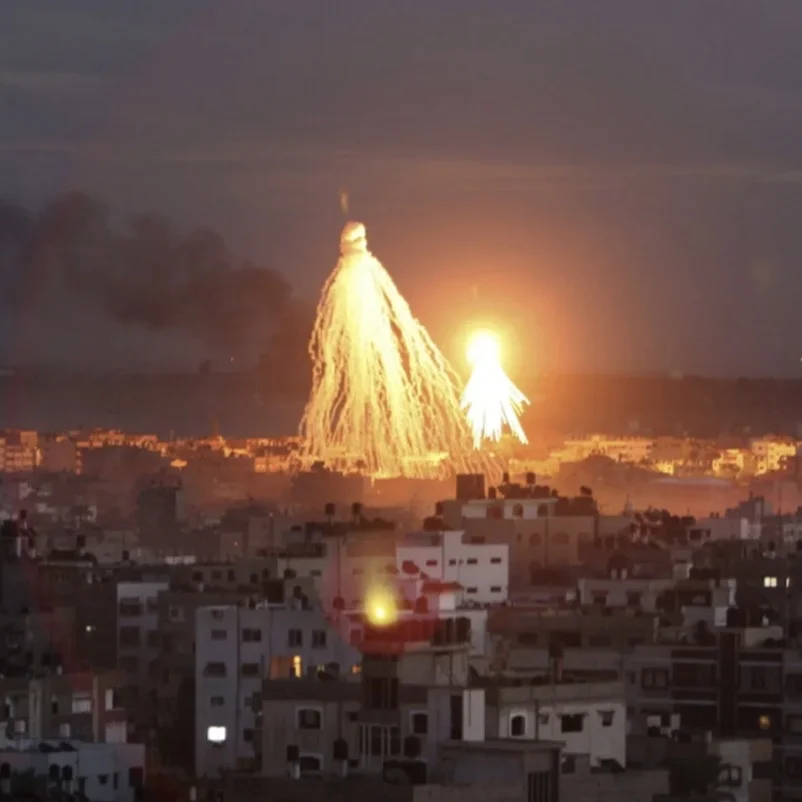

![Photo taken during the Israeli war on the Gaza Strip on 28 December 2008 [Rahim Khatib/Apaimages]](https://images.squarespace-cdn.com/content/v1/5a76338364b05f6e4e4370f2/1569208400862-0B454P7LB7VA57K2T9YK/9-22+cast+lead+top.jpg)





